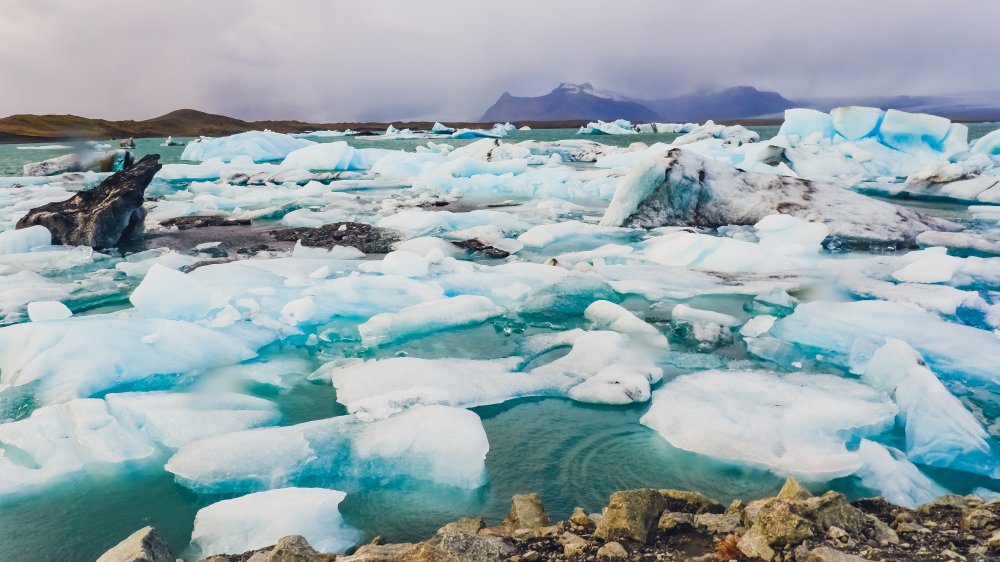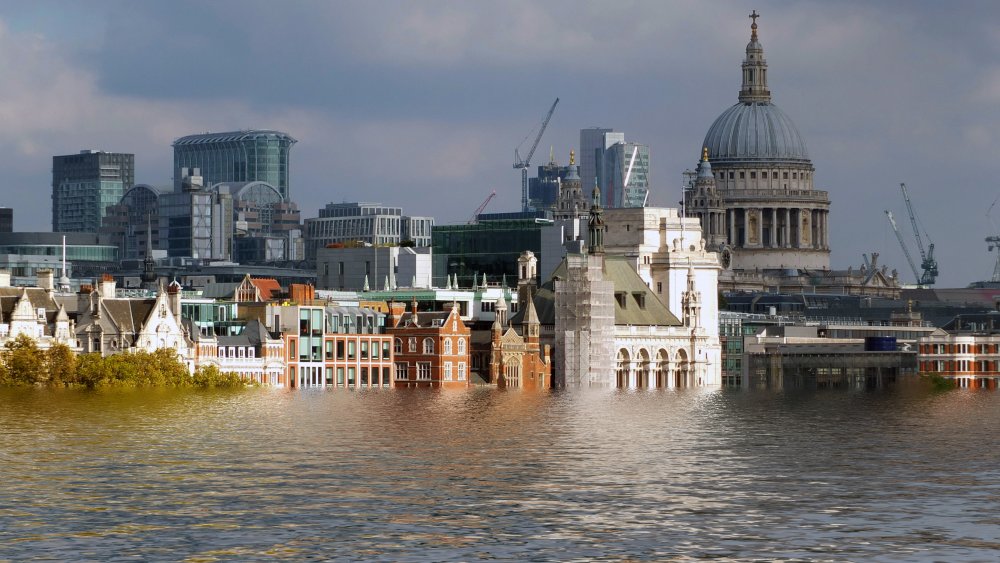What Would Earth Look Like If All The Ice Melted?
The world currently faces the contradictory predicament of possibly having too much and too little water in the not-too-distant future. While 70 percent of Earth's surface is covered in water, a measly three percent of it is drinking water, per the World Wildlife Fund. Of that three percent, two thirds is virtually inaccessible, either "tucked away in frozen glaciers or otherwise unavailable for our use." Over a billion people don't have adequate access to water while a total of 2.7 billion people experience water scarcity at least one month a year. Wetlands are vanishing, aquifers are drying up or becoming undrinkable due to pollution, and humans use too much water. At this rate, an estimated two-thirds of the world may face water shortages by 2025. Ironically, melting glaciers may worsen the world's water shortages while creating cataclysmic floods.
Water, water everywhere, nor any drop to drink
Per a 2017 report by Forbes, an estimated five million cubic miles of ice blanket the planet. If it all melted, the sea level would elevate by 216 feet. Most of the Atlantic coast would disappear under the sea like Atlantis. Similarly, Florida and the Gulf Coast would become decorations in world's aquarium. The United Nations warns that island nations which have contributed the least to climate change would suffer the worst harm as encroaching waters wash their homes away.
Elsewhere, melting ice would deprive people of water. In some cases, rising sea levels and resultant flooding would contaminate water supplies and stifle agriculture. In other cases, melting glaciers are drinking water. Reuters reports that 95,000 glaciers provide vital meltwater to 221 million people in mountainous regions ranging from India to Kazakhstan. For these parts of Asia, nature's ice water isn't just refreshing; it serves as a drought buffer. But as temperatures rise, and ice levels fall, that water will sustain fewer people. Moreover, that melting may also precipitate devastating floods. Per NPR, in Pakistan, an alarming 3,000-plus glaciers "have formed unstable lakes." At least thirty may burst, which could cause avalanches and flash floods that bring boulders and debris with them.
Obviously, the elephant in the water-submerged room is mankind's seeming inability to take climate change seriously. It drives sea level rises, and accelerates water shortages, and humans accelerate climate change. The Greta Thunbergs of the world may issue fact-backed warnings, but at the end of the day, the species may brush off the risks like dandruff until the species is head-head-and shoulders below water.

